Occupational safety training for fruit and vegetable processing
99,000 ₫
Note: The above price is calculated per person, and the price may vary depending on the number of trainees participating in the course and market fluctuations. For more accurate pricing support, please refer to the quotation or contact our consultants directly.
Occupational safety is an important issue in vegetable and fruit processing factories and needs to be promptly addressed to ensure the health and safety of workers, enhancing the reputation of businesses. The Occupational Safety Training course is one of the effective solutions to raise awareness about accident prevention for workers participating in vegetable and fruit processing.
Table of Contents
Toggle1. Overview of vegetables and fruits
a. What are vegetables and fruits?
- Vegetables and fruits are plants used in food processing, diverse in color, shape, flavor, and nutritional value. They are grown on land and harvested for use as fresh food or processed into many different dishes, including soups, stir-fries, roasts, grills, stews, or processed into juices, smoothies, salads, sliced fruits, and other vegetarian dishes.
- Vegetable and fruit processing is an important profession in agriculture and food in Vietnam. Currently, this industry is developing strongly, meeting the consumption needs of the people and for export to international markets.
- According to the Report on the production, business, and export situation of vegetables and fruits in 2020 by the Ministry of Agriculture and Rural Development, the production of vegetables and fruits in 2020 reached about 38 million tons, with a production value of nearly 500 trillion VND. In which, some products such as tomatoes, cabbage, radishes, carrots, potatoes, peas, durian, watermelon… are vegetables and fruits with great potential for processing and export.
- In addition, in recent years, the demand for clean vegetables and fruits, free of pesticides, and safe for consumer health, has been popular. Therefore, organic vegetables and fruits and vegetables and fruits grown according to the VietGAP (Good Agricultural Practices) method are being prioritized for development in Vietnam.

b. Types of vegetable and fruit processing machinery
Common types of vegetable and fruit processing machinery in manufacturing factories include:
- Peeling machine: This machine is used to peel vegetables and fruits such as carrots, potatoes, cassava, peas, and cabbage.
- Cutting machine: This cutting machine is used to cut vegetables and fruits into different shapes and sizes, including wedges, strips, squares, or slices.
- Vegetable cleaning machine: This machine is used to clean vegetables before processing by using high-pressure water or air to remove dirt, sand, residue, and bacteria.
- Drying machine: This machine is used to dry vegetables and fruits after they have been cut and cleaned, ensuring that the vegetables and fruits can be preserved longer.
- Grinding machine: This machine is used to grind vegetables and fruits into a powder or small pellet form to be used as a seasoning in dishes.
- Packaging machine: This machine is used to package vegetables and fruits into containers for preservation and transportation to sales points.
Depending on the purpose and scale of manufacturing, vegetable and fruit processing factories can use different types of machinery to meet their manufacturing needs.

c. Typical vegetable and fruit processing businesses in Vietnam
Currently, there are many vegetable and fruit processing businesses in Vietnam, including both large and small businesses. Here are some typical businesses in this field:
- Vina T&T Group: is a leading vegetable and fruit processing business in Vietnam, with more than 20 years of experience in this field. The company has products such as canned vegetables, pickled radishes, pickled cabbage, canned onions, canned tomatoes, canned fruits…
- Loc Hoa Group: is one of the leading businesses in the field of fresh vegetable and fruit processing in Vietnam, with products such as white radishes, carrots, potatoes, cassava, cabbage… The company also manufactures vegetable and fruit juices.
- Vinamit: is a pioneer business in processing vegetables and fruits into dried products, such as dried potatoes, dried watermelon, dried mango, dried rambutan… Vinamit’s products are widely distributed in domestic and international markets.
- Dabaco: is a business specializing in manufacturing frozen vegetables and fruits, including vegetables and fruits such as carrots, potatoes, onions, cabbage, cauliflower… Dabaco’s products are exported to demanding markets such as Japan and South Korea.
- Hoang Son Food: is a business specializing in manufacturing processed products from vegetables and fruits, including various pickled products, pickled radishes, pickled cabbage, canned tomatoes… The company has a widespread distribution system across the country and in the Southeast Asia region.
d. Specific jobs in a vegetable and fruit processing factory
Group 1
- Executive director, deputy executive director, department head in a vegetable and fruit processing factory.
Group 2
- Safety officer: manages safety in the factory, designs safety procedures, supervises and urges employees to comply with safe work procedures.
Group 3
- Raw material reception: Here, the factory receives and checks the quality of input raw materials (vegetables, fruits), then classifies and arranges them to proceed with the next stages.
- Washing: Raw materials are put into a washing machine to remove dirt, pests, pesticides, preservatives, and other impurities.
- Cutting, slicing, chopping: Raw materials are put into specialized machinery to be cut, sliced, and chopped into different sizes and shapes depending on the manufacturing requirements.
- Drying: After being cut, sliced, and chopped, the raw materials are dried using industrial dryers to retain the nutrients and flavor of the vegetables and fruits.
- Packaging: After drying, the raw materials are packaged and boxed for preservation and transportation to stores, supermarkets, or to the hands of consumers.
- Quality control: Throughout the manufacturing process, all stages are checked for quality to ensure the products meet quality standards and food hygiene and safety.
- Preservation: The factory must have a preservation system that ensures the products are properly stored to retain the quality and flavor of the dried vegetables and fruits.
- Factory sanitation: Ensuring factory sanitation is a very important factor to ensure food hygiene and safety and product quality.
Group 4
- Office jobs, serving, sales, marketing.
- Manufacturing management, quality management, human resource management, material management, financial accounting management.
- Research and development of new products, designing product packaging.

2. Overview of the occupational safety training course in vegetable and fruit processing
Within the scope of this article, we focus on the issues surrounding Group 3, because Group 3 is the group directly involved in the manufacturing process, bearing the highest risk of occupational accidents. Refer to other groups here
a. What is Group 3 occupational safety training?
- Occupational safety training for Group 3 are training sessions that equip workers with the awareness of how to prevent occupational accidents.
- The occupational safety training course will help workers recognize and prevent dangers, and limit the risks of occupational accidents during work.
REGISTER FOR OCCUPATIONAL SAFETY TRAINING SERVICE
b. Training duration
First-time safety training duration
- Total training duration is at least 24 hours, including the test time.
- 8 hours of theoretical study on the system of policies and laws on occupational safety and health
- 8 hours of theoretical study on basic knowledge of occupational safety and health
- 4 hours of theoretical study on specialized training content
- 2 hours of practical training on specialized training content
- 2 hours of theoretical examination at the end of the training course
The safety training center will allocate the time into multiple training sessions depending on the time arrangement for the employees. However, there will usually be 6 training sessions, and the course will take place over 3 days, provided that the manufacturing business can arrange continuous study time.
Periodic safety training duration
- Before the occupational safety card expires, if an employee wants to get a renewal, they must undergo a periodic occupational safety training course, with the periodic safety training duration being at least 50% of the first-time safety training duration.
Explanation: The total periodic occupational safety training duration is at least 12 hours, including the test time. After completing the periodic training course and passing the test, the employee will be re-issued or have their occupational safety card renewed.
c. Content of the training course
| No. | TRAINING CONTENT | TRAINING DURATION (HOURS) | |||
| Total | Of which | ||||
| Theory | Practical | Test | |||
| I | System of policies and laws on occupational safety and health | 8 | 8 | 0 | 0 |
| 1 | Overview of the system of legal normative documents on occupational safety and health. | 6 | 6 | ||
| 2 | System of technical standards and regulations on occupational safety and health. | 1 | 1 | ||
| 3 | Specific regulations of state management agencies on occupational safety and health when constructing, expanding or renovating works, facilities for manufacturing, using, preserving, storing and inspecting machinery, equipment, materials, and substances with strict requirements on occupational safety and health. | 1 | 1 | ||
| II | Basic knowledge of occupational safety and health | 8 | 8 | 0 | 0 |
| 1 | Basic knowledge of dangerous and harmful factors at the workplace. | 4 | 4 | ||
| 2 | Methods for improving working conditions. | 1 | 1 | ||
| 3 | Safety culture in manufacturing and business. | 1 | 1 | ||
| 4 | Rights and obligations of employers and employees; policies and regimes on occupational safety and health for employees; functions and duties of the occupational safety and health network. | 1 | 1 | ||
| 5 | Occupational safety and health regulations, signs, occupational safety and health instructions, and the use of safety equipment, personal protective equipment; first aid skills for occupational accidents, prevention of occupational diseases. | 1 | 1 | ||
| III | Specialized training content | 6 | 4 | 2 | 0 |
| General knowledge of types of machinery, equipment, substances that generate dangerous and harmful factors; analysis, assessment, management of occupational safety and health risks, safe work procedures with machinery, equipment, and substances with strict requirements on occupational safety and health. | 6 | 4 | 2 | ||
| IV | Occupational safety training test at the end of the training course | 2 | 2 | 0 | 0 |
| Total | 24 | 22 | 2 | ||
See more training content of the 6 groups
d. Occupational safety card
After completing the occupational safety training course and passing the test, the employee will be issued an occupational safety card (commonly referred to as a Group 3 occupational safety certificate ).
The Group 3 safety card will clearly show information such as: full name, date of birth, specific job, and work environment. It will also include the training duration, a red stamp, and a signature confirming the completion of the training course.
According to the regulations on issuing safety cards specified in Clause 2 of Article 24 of Decree 44/2016/ND-CP, there are two cases:
- In the case where the employer and the employee have a labor contract, the employer must sign, stamp, and seal the safety card for the Group 3 trainee after they have undergone the training course from the occupational safety training unit and passed the test.
- In the case of freelance or seasonal workers who do not have a labor contract, the training unit must sign, stamp, and seal the safety card for the employee after they have undergone the training course from the occupational safety training unit and passed the test.

3. Identifying dangers affecting workers during vegetable and fruit processing
During the vegetable and fruit processing, workers can be affected by the following factors:
- During the planting, preservation, transportation, and processing of vegetables and fruits, pesticides, plant protection chemicals, or chemical fertilizers may be used. If not used correctly, these chemicals can be harmful to the health of the workers.
- Vegetables and fruits are often handled by cutting, peeling, or processing into other products. This process often creates dust, which affects the respiratory system of the workers.
- Tools and machinery used in the vegetable and fruit processing can cause injuries or occupational accidents if not used correctly.
- During processing, workers may have to work in high or low-temperature environments, which affects their health and comfort.
- During processing, workers may have to work in an environment with toxic gases, such as CO2, NH3, H2S, which are dangerous to their health and lives.
- If the electrical equipment in the factory is not regularly maintained, not properly insulated, or not waterproof, it will cause an electric shock hazard for workers during manufacturing.
4. Common types of occupational accidents for workers during vegetable and fruit processing
Common types of occupational accidents that occur during vegetable and fruit processing include:
- Cuts to hands and fingers: The use of knives, scissors, and machinery to process vegetables and fruits can easily cause cuts to hands or fingers.
- Burns from hot water or hot oil: During processing, vegetables and fruits are often boiled in hot water or fried in hot oil, and if safety is not ensured, it can easily cause burns from hot water or hot oil.
- Food poisoning: During vegetable and fruit processing, if food hygiene and safety are not ensured, there will be a risk of food poisoning for the workers.
- Vision loss: Vegetables and fruits can contain chemicals such as detergents, pesticides, herbicides, which can cause vision loss, eye strain, difficulty breathing, or vomiting for workers.
- Back pain and other health problems: Jobs during vegetable and fruit processing often require workers to stand and perform tasks for a long time, which causes back pain and other health problems for the workers.
5. Safety measures when participating in vegetable and fruit processing
To ensure safety during vegetable and fruit processing, workers need to implement the following safety measures:
- Use personal protective equipment: To protect their eyes, ears, hands, and feet from accident risks during processing, workers need to use protective equipment such as hard hats, protective glasses, masks, gloves, boots, safety shoes,…
- Use explosion-proof equipment: When using processing equipment such as ovens, dryers, workers need to check them carefully before use to ensure they do not cause explosions. In addition, it is necessary to ensure cleanliness and good ventilation to minimize the risk of explosions.
- Use safe chemicals: During vegetable and fruit processing, workers need to use chemicals that are safe and comply with chemical usage regulations.
- Ensure food hygiene and safety: To ensure consumer safety, vegetable and fruit processing factories need to comply with food hygiene and safety regulations, and check product quality before putting it on the market.
- Occupational safety training: Businesses need to train and raise awareness for workers about safety procedures, how to use equipment, and food hygiene and safety regulations so that workers can protect themselves and consumers.
- Periodically organize work environment monitoring in factories and enterprises, collect and analyze harmful factors to workers, and then adjust to reduce the level of harm to prevent occupational diseases for them.

6. Benefits of occupational safety training in vegetable and fruit processing
An Toan Nam Viet provides businesses with excellent benefits after completing occupational safety training courses as regulated in Decree 44/2016/ND – CP on occupational safety and health, for companies, enterprises, and factories.
- Employees can recognize the potential risks of occupational accidents and then have preventive measures to avoid them.
- Your business can establish risk prevention measures in the manufacturing, operation, and maintenance processes.
- Reduce costs when safety risks occur in the workplace.
- Uninterrupted manufacturing will help increase labor productivity and product quality.
- Comply with occupational safety laws, avoiding legal risks.
- Create a reputation and professionalism in all aspects, thereby elevating your business’s brand.
An Toan Nam Viet’s training courses are a solution to prevent and combat external factors affecting individuals so they can avoid dangers that can lead to injury or, more seriously, death.
REGISTER FOR OCCUPATIONAL SAFETY TRAINING SERVICE
7. Customer feedback after completing the occupational safety training course in vegetable and fruit processing
An Toan Nam Viet has many years of experience in its mission to accompany many businesses in Vietnam in general and in the southern provinces in particular. And that responsibility is something very valuable to An Toan Nam Viet, which is why our Occupational Safety Training is increasingly professional. And the motivation for An Toan Nam Viet’s strong development comes from the positive feedback and suggestions from the businesses we have served. Below are the testimonials from our valued partners.
Bac Nam E&C Investment and Construction Joint Stock Company
“The first time I used the service at An Toan Nam Viet, I was very surprised by the enthusiastic 24/7 support from the consulting team. The class organization was very quick and convenient for our company, thank you very much for An Toan Nam Viet’s service!”
Hoa Dat Construction and Trading Joint Stock Company
“An Toan Nam Viet’s service has helped us a lot in simplifying occupational safety and completing safety records for our work process. The consulting team is enthusiastic and timely in answering our questions. 5 stars for An Toan Nam Viet.”
See more customer interviews after using An Toan Nam Viet’s service
8. An Toan Nam Viet’s occupational safety training capability
An Toan Nam Viet is a reputable and high-quality occupational safety training center in Vietnam today. With continuous occupational safety training sessions taking place at manufacturing workshops, factories or construction sites across the country (all 63 provinces and cities in Vietnam).
REGISTER FOR OCCUPATIONAL SAFETY TRAINING SERVICE
Occupational safety training license
- An Toan Nam Viet has been inspected and certified by the Safety Bureau of the Ministry of Labor – Invalids and Social Affairs as qualified to operate occupational safety and health training. This further strengthens our capacity in occupational safety training.

Training materials and lectures
- Before occupational safety training materials are used in occupational safety training courses, they are reviewed and approved to ensure that the lectures are factually correct and effective when applied.
- The teaching method of our instructors is standardized according to An Toan Nam Viet‘s teaching standards, which is a method that experts in occupational safety and health training have researched and refined during their teaching to bring the highest knowledge absorption efficiency to trainees.
Facilities
- Controlling the factors in the classroom that affect the training process will increase teaching performance and the effectiveness of student knowledge absorption.
- Our training support facilities always provide spacious classrooms that meet standards for area, lighting, training equipment, etc.
9. Reputable and quality nationwide safety training center
At An Toan Nam Viet, we always prioritize our professional dedication to occupational safety training. For us, imparting the knowledge of self-protection to workers so they have a safe foundation on their livelihood path is contributing to building the country.
To ensure effective training, we meticulously and carefully prepare every small detail. From preparing teaching tools, equipment, and devices to textbooks, materials, sound, and lighting.
Our occupational safety training instructors are experts with many years of experience in the field. They even have research projects identifying dangers in all occupations and how to prevent them.
The instructors’ lectures are distilled from real-world practice and are conveyed in the most vivid and easy-to-visualize way for workers. These factors help workers feel comfortable during their study time and absorb our taught knowledge well. Of course, the knowledge conveyed always closely follows Decree 44/2016/ND-CP.
From there, they grasp many measures to prevent dangers and how to protect themselves. At the same time, they can apply it in the most appropriate way in their actual work.
Our safety training center is proud to be a reputable and professional provider of occupational safety training services with the following advantages:
- Competitive training costs but training quality is still guaranteed.
- Lich organized training is flexible with the production situation of the company.
- Fast and legally compliant procedures for issuing occupational safety training certificates.
- Training instructors are highly experienced professionals with many years in the field.
- The classroom environment is controlled for factors that affect the training process, increasing teaching efficiency and student knowledge absorption.
- The lectures are compiled to be suitable for occupational safety work at businesses.
- An Toan Nam Viet works with dedication and professionalism to support customers accurately and as quickly as possible.

10. See more occupational safety training documents for vegetable and fruit processing
- Occupational safety documents for vegetable and fruit processing
- Set of occupational safety training documents
- Set of occupational safety training test questions
- Multiple-choice test for occupational safety in vegetable and fruit processing
- Slides for occupational safety training lecture on vegetable and fruit processing
11. Occupational safety training activities for vegetable and fruit processing
1 review for Occupational safety training for fruit and vegetable processing
No comments yet

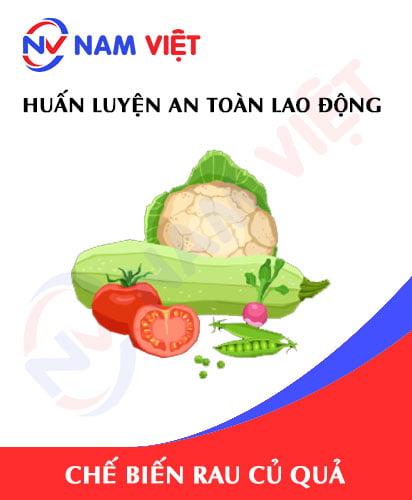
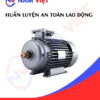
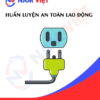









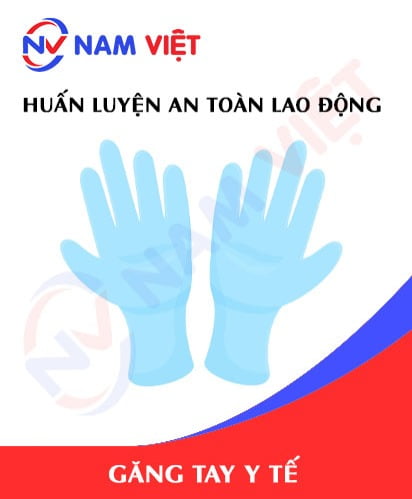
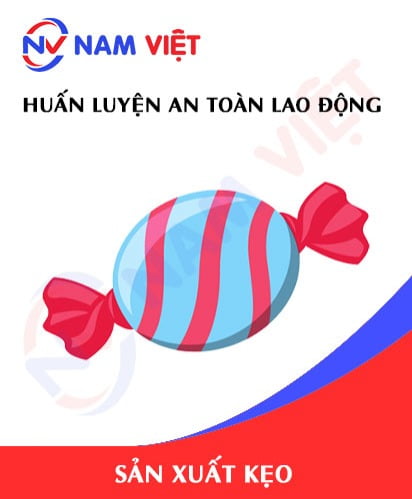
caotiensyhung.07081999
Dịch vụ huấn luyện an toàn lao động rất tốt nhé, giảng viên dạy rất sinh động dễ hiểu!